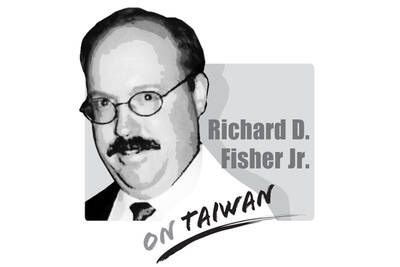At a critical juncture in China’s industrial transformation, the technology sector has emerged as a new pillar of economic growth. Yet its rise reflects a more comprehensive national strategy shift. The state planners who once skillfully engineered China’s reform era have been dealing with the unintended consequences of their success. From the 1980s to the 2010s, the fast-growing, export-driven economy fostered a dynamic private sector that would demand governance mechanisms beyond traditional state control.
To adapt, Chinese central and local government officials have resorted to pragmatic tactics to navigate an unfamiliar economic landscape and control private entrepreneurs. However, a continued reliance on infrastructure investment and real estate has exposed the limits of China’s investment-led growth model.
Compounding such structural challenges, escalating Sino-American tariff disputes have hastened the decoupling of bilateral trade relations and signaled the waning of China’s dependence on export-driven development.
The trade dispute, intensified by US President Donald Trump’s imposition of up to 145 percent tariffs on Chinese imports, prompted Beijing to retaliate with reciprocal tariffs of 125 percent on US goods.
Chinese President Xi Jinping (習近平) has adopted an assertive posture, mobilizing a propaganda apparatus to stir patriotic fervor and consolidate domestic support. His rhetoric — vowing “to fight to the end” — departs from former Chinese leader Deng Xiaoping’s (鄧小平) reformist pragmatism and echoes Mao Zedong’s (毛澤東) doctrine of “politics in command.”
As the US retreats from multilateral alliances under the second Trump administration, China positions itself as a more dependable actor in a multipolar world. Xi’s recent visits to Southeast Asian nations reflect a strategic push to bolster regional ties and counter US influence. The diplomatic overtures signal a push for closer economic alignment with Southeast Asia. Yet it remains uncertain whether such efforts would draw these countries away from Washington’s orbit.
Trump’s erratic approach to tariff policy has sown confusion among global business leaders and disrupted financial markets. The intensifying trade conflict has also revealed weaknesses within China’s leadership. In his book, Xi Jinping: The Hidden Agendas of China’s Ruler for Life, Hong Kong political analyst Willy Lam (林和立) writes about a significant shift in the Chinese Communist Party’s elite politics: Since Xi’s rise to power, reform-minded, Western-educated technocrats have been replaced by party loyalists steeped in ideology, propaganda and internal discipline.
While the cadre excels at enforcing party control, it lacks the expertise to manage complex economic affairs or engage in nuanced diplomacy. In stable times, that centralized governance model projects strength; in times of crisis, it obstructs the flow of reliable information and impedes flexible policy responses.
Meanwhile, Taiwan has emerged as a key player in the evolving trade landscape. As one of the first to enter tariff negotiations with the US on Friday last week, Taiwan is poised to secure bilateral agreements that could address trade imbalances. Once the negotiations conclude in Washington, more discussions would follow — particularly concerning Taiwan’s integration into major economic and strategic alliances. With sufficient political will, Taiwan and the US can deepen their trading relationship within the Indo-Pacific order.
Joseph Tse-Hei Lee is a professor of history at Pace University in New York. In spring last year, he was a Taiwan Fellow and a visiting scholar at Academia Sinica.
We are used to hearing that whenever something happens, it means Taiwan is about to fall to China. Chinese President Xi Jinping (習近平) cannot change the color of his socks without China experts claiming it means an invasion is imminent. So, it is no surprise that what happened in Venezuela over the weekend triggered the knee-jerk reaction of saying that Taiwan is next. That is not an opinion on whether US President Donald Trump was right to remove Venezuelan President Nicolas Maduro the way he did or if it is good for Venezuela and the world. There are other, more qualified

This should be the year in which the democracies, especially those in East Asia, lose their fear of the Chinese Communist Party’s (CCP) “one China principle” plus its nuclear “Cognitive Warfare” coercion strategies, all designed to achieve hegemony without fighting. For 2025, stoking regional and global fear was a major goal for the CCP and its People’s Liberation Army (PLA), following on Mao Zedong’s (毛澤東) Little Red Book admonition, “We must be ruthless to our enemies; we must overpower and annihilate them.” But on Dec. 17, 2025, the Trump Administration demonstrated direct defiance of CCP terror with its record US$11.1 billion arms
China’s recent aggressive military posture around Taiwan simply reflects the truth that China is a millennium behind, as Kobe City Councilor Norihiro Uehata has commented. While democratic countries work for peace, prosperity and progress, authoritarian countries such as Russia and China only care about territorial expansion, superpower status and world dominance, while their people suffer. Two millennia ago, the ancient Chinese philosopher Mencius (孟子) would have advised Chinese President Xi Jinping (習近平) that “people are the most important, state is lesser, and the ruler is the least important.” In fact, the reverse order is causing the great depression in China right now,
As technological change sweeps across the world, the focus of education has undergone an inevitable shift toward artificial intelligence (AI) and digital learning. However, the HundrED Global Collection 2026 report has a message that Taiwanese society and education policymakers would do well to reflect on. In the age of AI, the scarcest resource in education is not advanced computing power, but people; and the most urgent global educational crisis is not technological backwardness, but teacher well-being and retention. Covering 52 countries, the report from HundrED, a Finnish nonprofit that reviews and compiles innovative solutions in education from around the world, highlights a